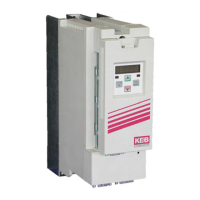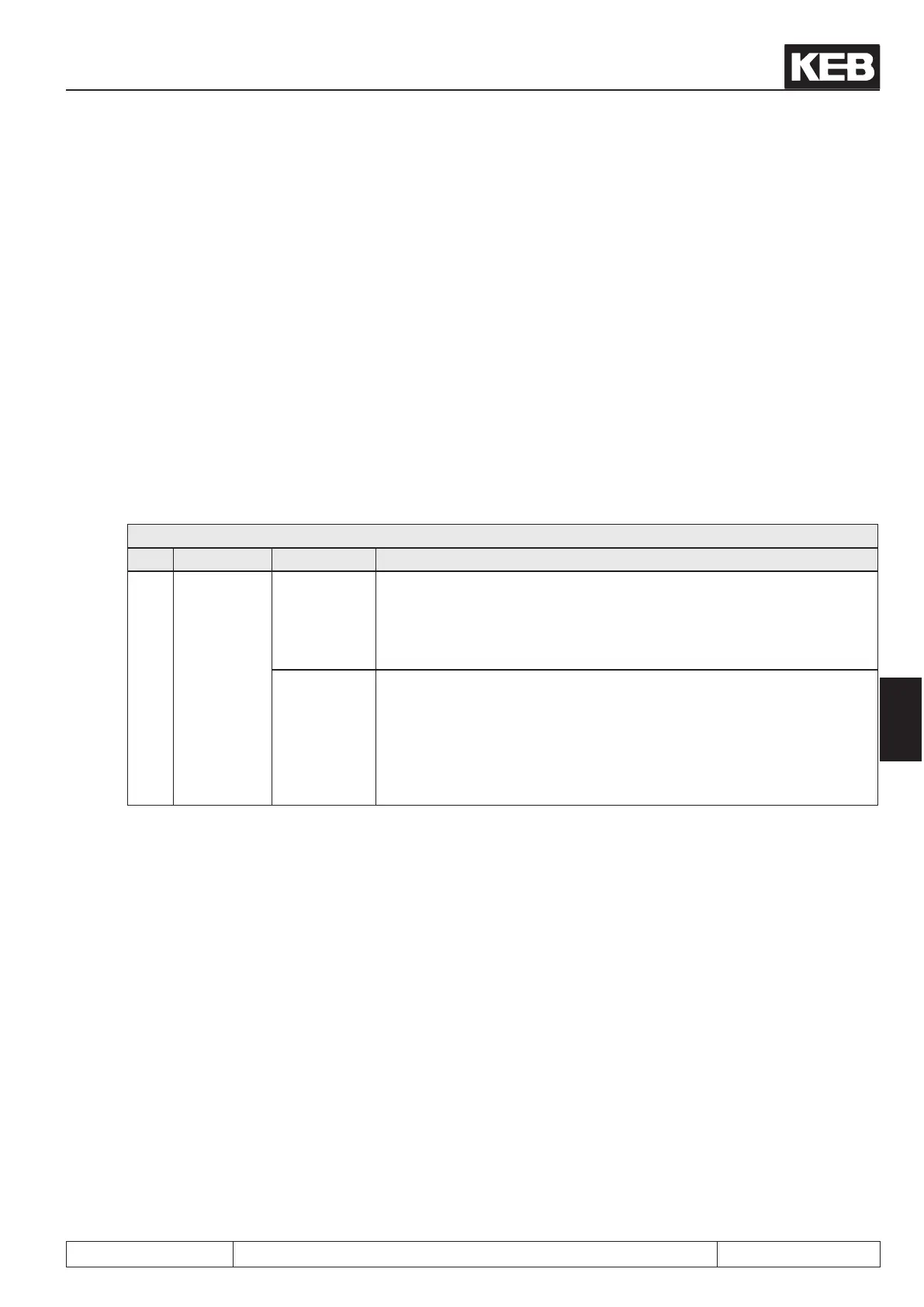numbered).
Each block contains the following information:
● PS.23: Index / selection → number (index) of the block
● PS.24: Index / position → target position for these block
● PS.25: Index / speed → maximum prole speed and target speed (the exact function depends on
the programming of PS.00 bit 4 and is explained later)
● PS.26: Index / next → contains the number of the block to be completed next
● PS.27: Index / mode → denes the traversal manner (relative or absolute) and determines whether
the next positioning step (the next index) is started automatically
● PS.46: rel.correction switch forward / PS.47: rel.correction switch reverse → are only needed for
special applications. The default setting is 0: off. Description of the function in chapter 7.12.4.13
"ying referencing with correction")
Maximally 32 blocks can be programmed. There are two possibililties to dene the maximum prole speed:
PS.00: Posi / synchronous mode
Bit Meaning Value Explanation
4
Positioning /
target speed
0:
PS.25/PS.25
Each block has its own maximum prole speed. The maximum prole
speed is set via PS.25 "index speed". It is acquired at the time of the
"start positioning" command and can not be changed thereafter for the
positioning in progress. The speed at which to pass through the target
is determined by the PS.25 of the following block.
16:
PS.31/PS.25
The maximum prole speed is preset via PS.31 for all blocks. A change
of the maximum prole speed during the current positioning is possible.
The maximum prole speed is calculated from:PS.31: "max. speed %"
x oP.10: "max. reference forward".
The speed to pass the target is determined by PS.25 of the actual
positioning step. If the drive shall stop at the target, the target speed
must be PS.25 = 0.
There are 2 possibililties for the positioning process that are distinguished by PS.27 bit 0:
Posi- and synchronous operating
© KEB, 2012-10 COMBIVERT F5-A, -E, -H Page 7.12 - 39
7

